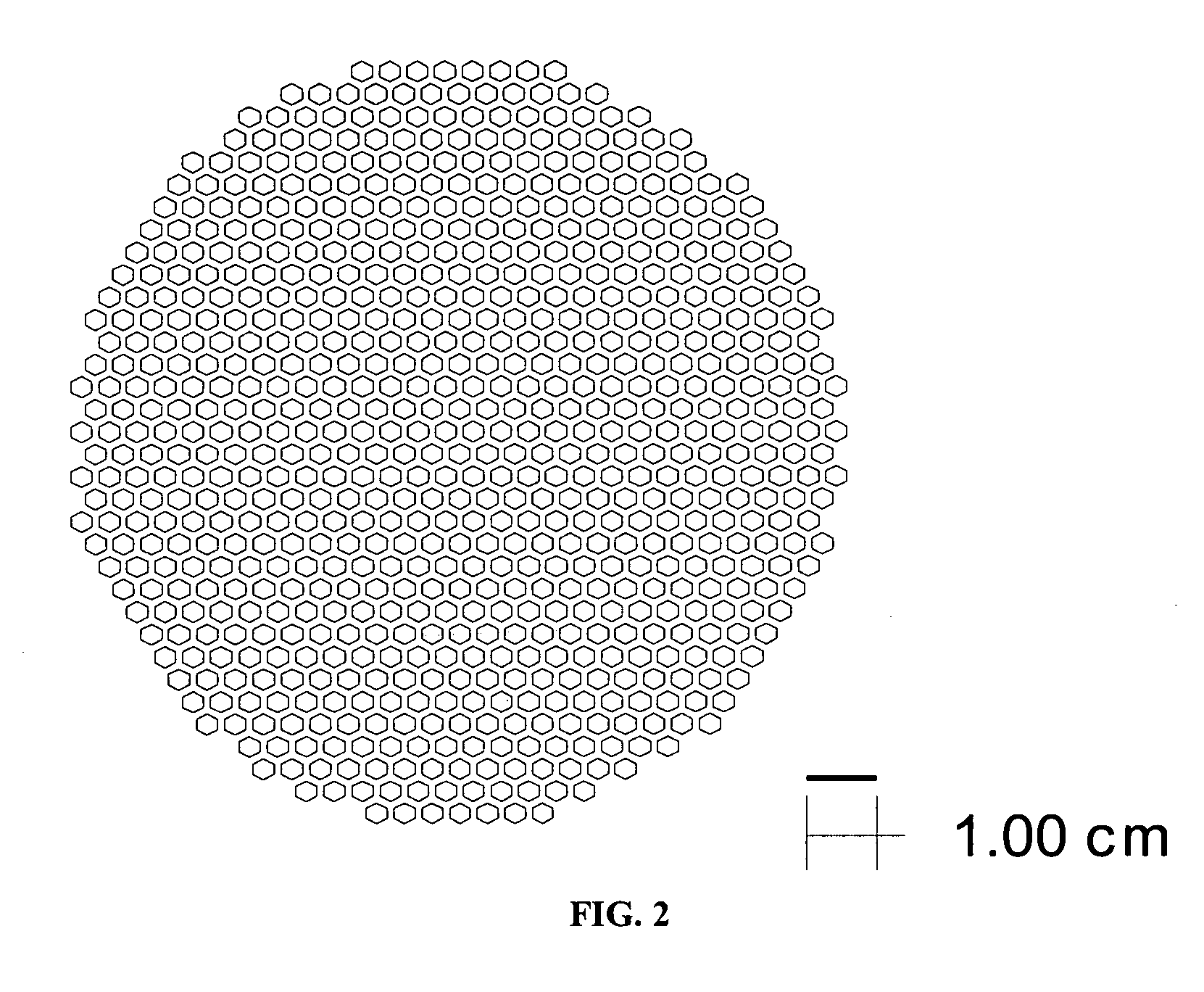Ceramic membranes with integral seals and support, and electrochemical cells and electrochemical cell stacks including the same
a ceramic membrane and seal technology, applied in the field of ceramic membranes with integral seals and support, and electrochemical cells and electrochemical cell stacks including the same, can solve the problems of difficult scaling to large power stacks, low volumetric or gravimetric power density of conventional tubular cells, and difficult processing of cathode-supported cells. , to achieve the effect of avoiding diffusion limitation of performance, low ohmic contribution of the electrolyte layer, and high mechanical strength
- Summary
- Abstract
- Description
- Claims
- Application Information
AI Technical Summary
Benefits of technology
Problems solved by technology
Method used
Image
Examples
example 1
Preparation of Membrane Structure I
[0070] The tri-layers were constructed with electrolyte and support tapes prepared with 6 mol % scandium-stabilized zirconia powder (initial SSA=8.704 m2 / g). The 6ScSZ tapes for the support structure were prepared by a conventional tape casting method and had a thickness of approximately 45 microns in the green state. The tape was cut into 15×15 cm sheets. The sheets were stacked on top each other, five sheets per stack. The resulting five-sheet stack was laminated at 80° C. and 12 MPa. The pattern shown in FIG. 2 was then cut in the laminate using a laser cutting system. The cut-out laminate was set aside.
[0071] The porous anode layer was constructed with cast tapes prepared with a nickel oxide and yttria-stabilized zirconia powder mixture. This mixture was made using 60 mol % NiO powder (Novamet) and 40 mol % yttria-stabilized zirconia (Unitec). The thickness of the dry tape was 45 microns. The sheets were then cut by hand to 15 cm×15 cm, moved...
example 2
Preparation of Membrane Structure II
[0074] The tri-layers were prepared, cast and laminated as described in Example 1. The support laminate was laser cut to produce the pattern shown in FIG. 6. The cut-out laminate was set aside. The two-sheet electrolyte-electrode stack was prepared as described in Example 1 and laminated with the cut-out support, also as described in Example 1. The final part was cut out of the laminate using the pattern shown by the dashed line in FIG. 7. The resultant component was sintered at 1400° C. for two hours to densify the electrolyte and support layers.
example 3
Preparation of Membrane Structure III
[0075] The tri-layers were prepared, cast and laminated as described in Example 1. The support laminate was laser cut to produce the pattern shown in FIG. 8. The cut-out laminate was set aside. The two-sheet electrolyte-electrode stack was prepared as described in Example 1 and laminated with the cut-out support, also as described in Example 1. The final part was cut out of the laminate using the pattern shown by the dashed line in FIG. 9. The resultant component was sintered at 1400° C. for two hours to densify the electrolyte and support layers.
PUM
| Property | Measurement | Unit |
|---|---|---|
| diameter | aaaaa | aaaaa |
| thickness | aaaaa | aaaaa |
| temperatures | aaaaa | aaaaa |
Abstract
Description
Claims
Application Information
 Login to View More
Login to View More - R&D
- Intellectual Property
- Life Sciences
- Materials
- Tech Scout
- Unparalleled Data Quality
- Higher Quality Content
- 60% Fewer Hallucinations
Browse by: Latest US Patents, China's latest patents, Technical Efficacy Thesaurus, Application Domain, Technology Topic, Popular Technical Reports.
© 2025 PatSnap. All rights reserved.Legal|Privacy policy|Modern Slavery Act Transparency Statement|Sitemap|About US| Contact US: help@patsnap.com



